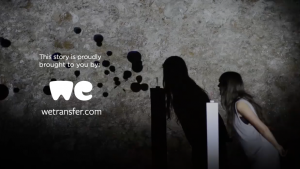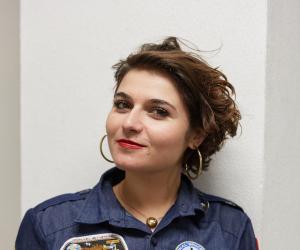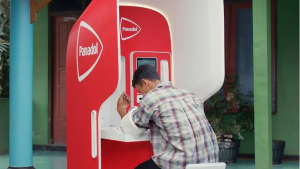Mars has for a long time been touted as humankind’s next evolutionary step. But there are a couple of things holding us back. To overcome one of the challenges, humankind’s inability to breathe on the red planet, experience designer Nelly Ben Hayoun took a trip into the bowels of the Earth, a platinum mine in South Africa. There, she demonstrated where scientists had discovered one of the most hardcore organisms in our history: the worm from hell.
Her expedition formed part of her Design Talk at the Design Indaba Conference 2017. In it, she introduced the audience to The Life, the Sea and the Space Viking, a project that hopes to encourage members of the public to engage with a fundamental question: can what we learn from Earth teach us how to colonise another planet?
Ben Hayoun’s project calls on a number of leading scientists at NASA and the SETI (Search for Extraterrestrial Intelligence) Institute to shine some light on what we already know. It also follows scientific expeditions of uncharted territories down mine shafts and frozen tundras.
Tullis Onstott, professor of geosciences at Princeton University, talked about his expedition to Antarctica which uncovered stromatolites, the earliest photosynthesizers on Earth. Onstott also talked about finding life in the mine shafts of South Africa, the last place we’d think to look. These organisms and others like them, called extremophiles, changed the course of evolution on Earth, forming the building blocks of life as we know it today.
In particular, Onstott’s research points to a species nicknamed “the worm from hell”. Found in 2011 living in several mines, the worms shattered scientific assumptions about the conditions needed for multicellular life.
“What we’ve discovered in South Africa is what you’d anticipate discovering if you were able to go beneath the surface of Mars,” explains Onstott.
For NASA’s planetary scientist Chris Mckay, the question is whether we should populate other planets with microorganisms such as the worm from hell before we even go. “The big idea to consider is the possibility of making Mars a planet that has life. Sometimes it’s called terraforming,” he explains.
And as we change the surface of Mars, we could learn how to maintain life on Earth, a planet currently battling climate change.
“The connection to Earth, of course, is that if we study Mars and study what is required to restore it to full biology and to maintain it that way, hopefully, we’ll learn important lessons about how to maintain full biology on Earth,” adds McKay.











